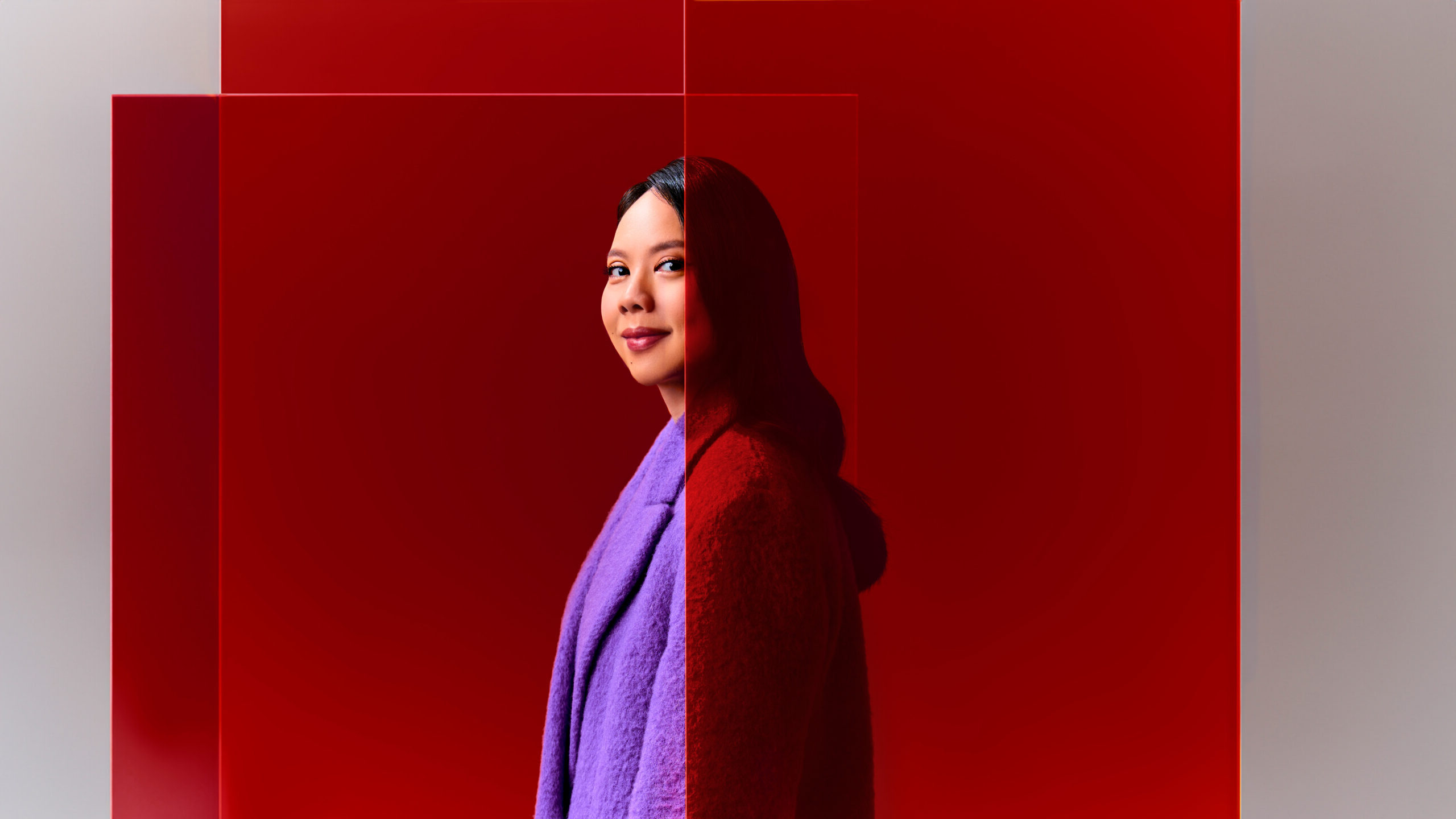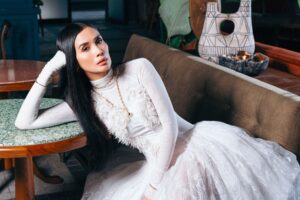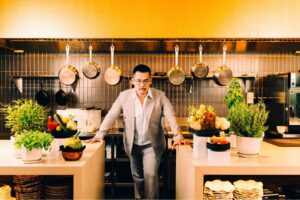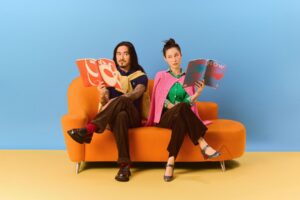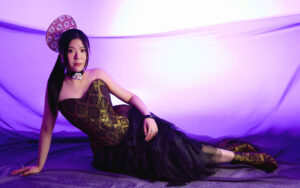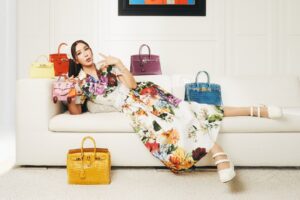Soft-spoken, reflective, and astute are three words that come to mind when describing Pamela Tan. But like her intricate installations, there’s more than meets the eye with the multidisciplinary artist. And so, one fine Thursday, we snuck her out of her usual Poh Sin Studio (named after her Chinese name) to get to know the artist and her art over a cover shoot and interview.
Hailing from Petaling Jaya, where she grew up as the second child of five siblings, Tan always had a knack for craft even as a child. “You know how [growing up] your parents would make you do birthday or greeting cards? I noticed my sister liked drawing and painting, while I was very hands-on, and I liked building 3D things, so my parents thought that I would make a good architect,” she recalls.
Naturally, she went on to pursue architecture, though the decision was also partially influenced by her father, who had studied the same course. Upon returning from London with a master’s degree from the University of Greenwich, Tan received her first art commission from Nike.
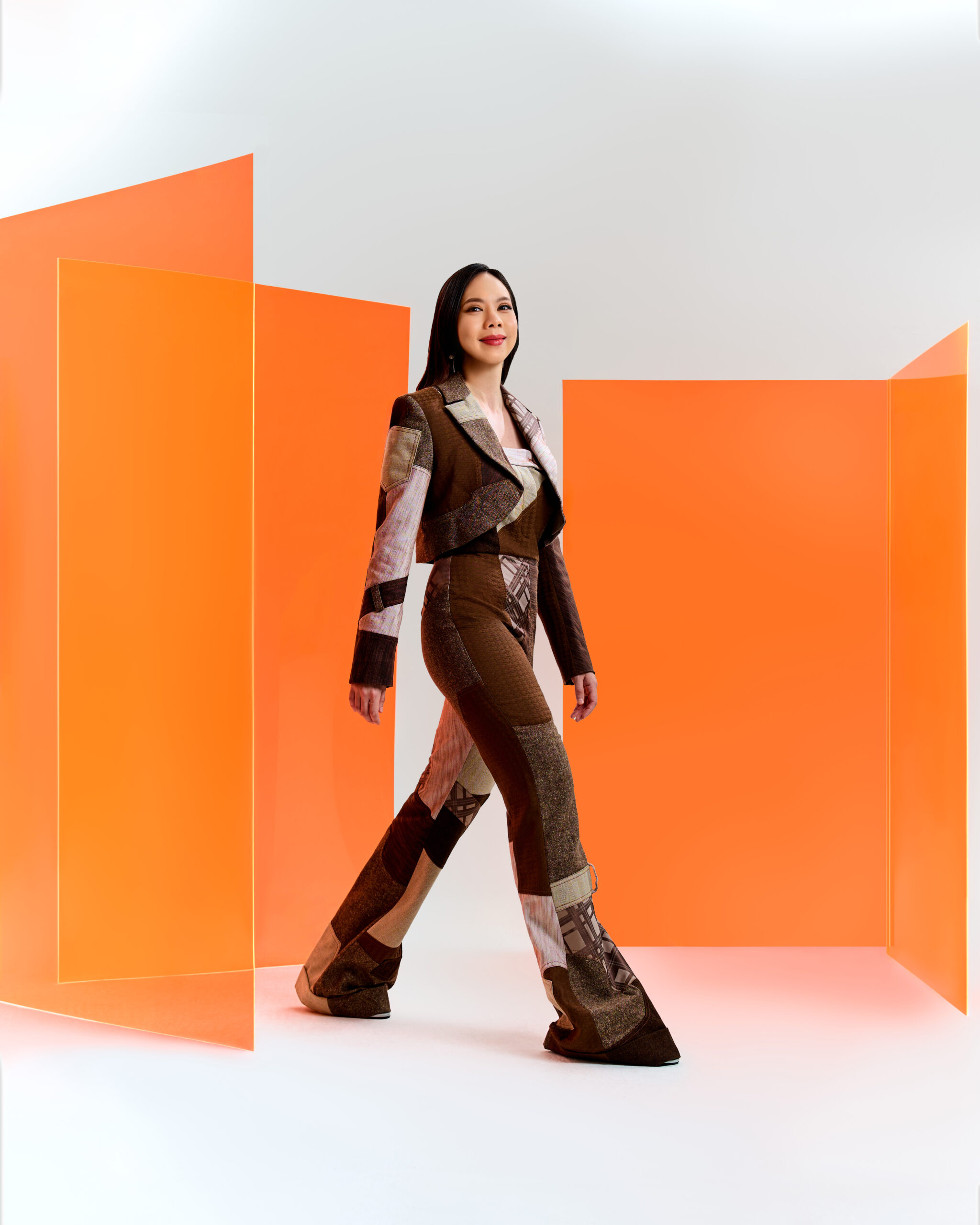
Building a foundation
The project in question was in celebration of Air Max Day, where Tan created an architectural bare-boned sneaker design titled Footprints, drawing inspiration from Nike designer Tinker Hatfield’s visit to the iconic Centre Pompidou in Paris. Both the Air Max 1 and the French landmark were revolutionary in their respective fields – something Tan was excited to explore and still fondly looks back on today.
However, commissions like that seemed few and far between then, so she returned to the more functional side of architecture after it was completed. “I didn’t have so much belief in myself and I thought it was one of those one-hit wonders or once-in-a-lifetime opportunities. But I realised that I actually liked doing more projects like Nike, I just didn’t know how to get those kinds of jobs,” the 33-year-old explains.
After working in three different architecture firms where she gained insight and experience on running projects and seeing through a building process “from design to authority to building and handover,” she finally decided to call it quits to venture into art instead.
“There are some parts of architecture that I really enjoy, like understanding spaces and people’s behavior. But often in Malaysia, the creative process is not taken very seriously. It’s not valued; it’s more about functionality, feasibility and budget, so I think that sort of limits my interest,” she tells earnestly. “I realised that I wanted to do something more.”
“I want to design spaces that engage people and create meaning while connecting with an existing context.”
Admittedly, it was far from an easy decision. After all, architecture is a well-respected profession which offers a sense of security that art can’t. There was even a point when Tan considered staying on for a few more years and getting her AR title (read: the professional licence for an Architect) so she could start her own firm, but life had other plans for her. “I was in denial for a long time. I tried to think of what was practical and not listen to what I really wanted. I think that compromised my health and that’s when I had to put my foot down,” she reveals.
“Back then, I was about 26 or 27 years old and my excuse was that if I screwed it up before I’m 30, it’s still okay,” she continues with a laugh, before adding on a more serious note, “But, really, at any age, as long as you give something a try, you can always go back to what you know if things don’t work out.”
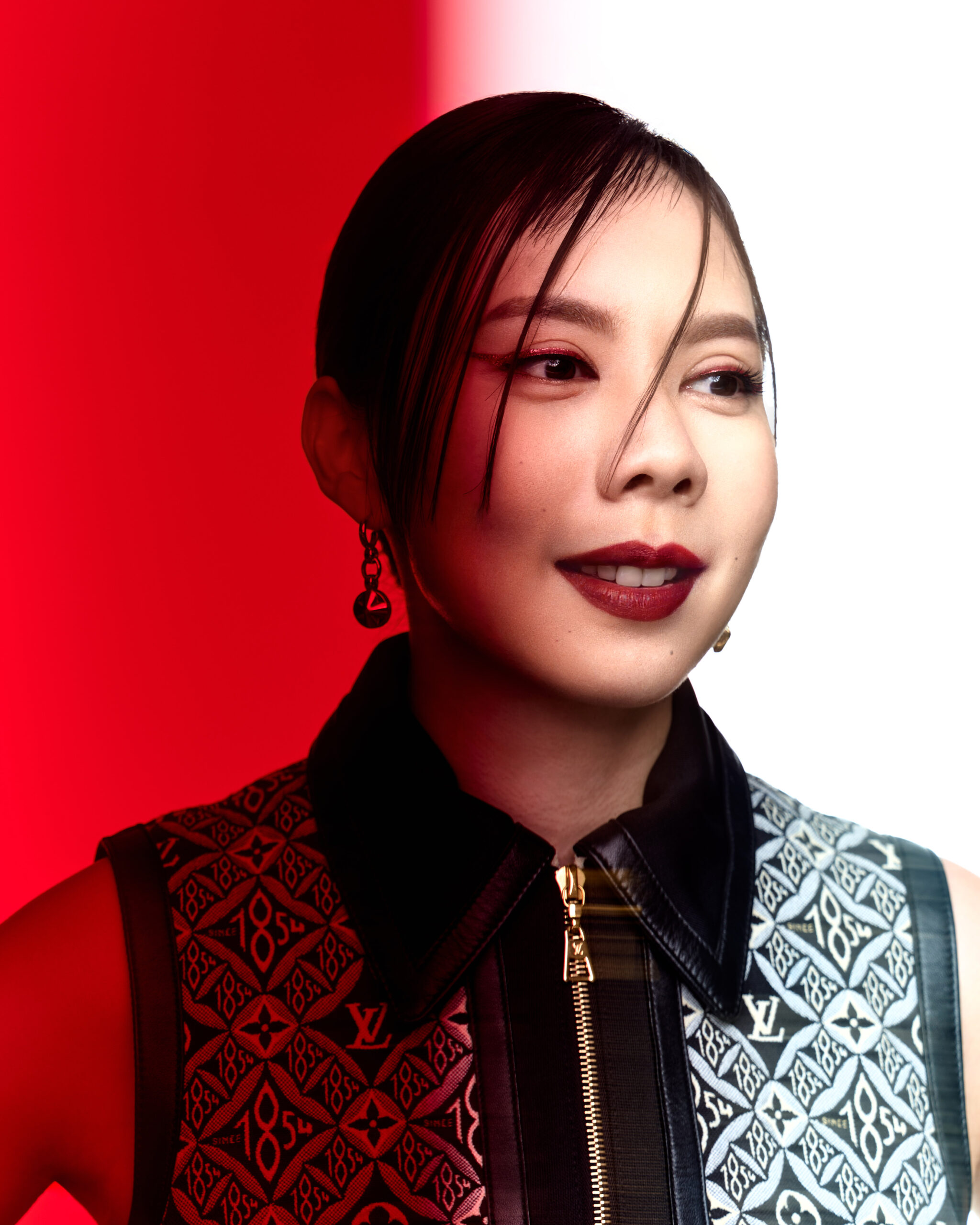
Seeing is believing
Emboldened by her resolve, Tan gave herself a year to experiment with art and network with people in the creative field. She designed earrings, vases, and objects on a smaller scale, based on her savings capacity. Towards the end of that year, she received an opportunity to work on her first public installation, dubbed Eden.
The ethereal, all-white showcase in 163 Retail Park in Mont Kiara composed of a light, skeletal structure with pebbled pathways and hanging glass spheres. Inspired by the story of the ‘Garden of Eden’, the installation blurred the boundaries between man-made wonders and the beauty of nature with the use of organic structures.
“To my surprise, Eden garnered so much attention, especially from international publications. That’s when I started receiving a lot more commissions for installations,” she gushes. And to think that the client had originally intended for her to create something small, like Footprints, as it was not commonly heard of for someone in Malaysia to build large-scale works.
“At the time, it seemed like only people overseas were willing to spend on things that are not functional; but I think once people here see and experience it in person and understand the importance of art in culture and spaces in terms of connecting people, that’s when they take it more seriously,” she asserts.
“There’s always an element of storytelling in my work.”
Indeed, seeing is believing, and such was the success of Eden that it earned the Bronze Award in the Design for Asia Award 2020. She also went on to showcase the installation at the WAVELENGTH: A Momentary Spring exhibition at the Beijing Times Art Museum along with 12 other artists from around the globe last year, as well as a smaller scale of Eden at South Korea’s Asian Culture Center, which will still be on display until later this month.
Since then, Tan continued pioneering various other art projects and large-scale installations around the country. Her impressive ouvre includes Endless Frames, an installation at Chinatown’s Kwai Chai Hong for the Mid-Autumn Festival in 2022; the Sunnyside Up project, which brightened up daily commutes at Pasar Seni MRT station from 2023 until June this year; and most recently, Embrace the Unknown, an installation in partnership with Disney Studios Malaysia to promote Pixar’s Inside Out 2.
Reflecting on her art, Tan says, “There’s always an element of storytelling in my work because I have a lot of ideas that may get lost with all the information, subjects and elements that I want to explore. So, I think for me, having a narrative helps to tie things together and allows me to imagine different scenarios and art forms.”

Defying gravity
According to Tan, it typically takes five months for her to complete a project from design to handover. Nevertheless, this varies depending on the scale of the work and the time given by her clients. “As an artist, of course you want your work to be great as possible despite the timeline, but learning to be realistic is very important. I think I have learned to manage expectations as well.”
On the most challenging part of her job, she shares, “I work with a lot of unconventional methods and materials so that’s quite challenging. I think timeline and budget as well, so finding that balance is very important.” However, she maintains that the novelty of her work makes it all the more exciting, not just for her or the design team, but even the fabricators and engineers she works with.
Whether it’s learning new ways to weld steel or playing with unusual materials like soil and PVC, everyone she collaborates with enjoys the process – that’s how she knows she’s creating a healthy environment. “It’s very wholesome to see that everyone feels equally excited. Creating something that has never been done before is a little bit like defying gravity – they just love the challenge, and they often share how they feel very proud of their work,” she beams.
“Creating something that has never been done before is a little bit like defying gravity.”
That said, Tan acknowledges that her architecture background plays no small role in bringing her artistic visions to life through blueprints and renderings, as well as providing her with a general understanding of building materials and spaces. Rather than moving away completely from the field, the work she does today emphasises the art in architecture – or an intersection of both, if you will.
So, what is her definition of art? “To me, art is a tool or medium that allows you to express yourself and your thoughts, and a good work of art is the kind that leaves you thinking about it. Some art is controversial, but maybe it was meant to be that way to spark discussion. If an artwork leaves me thinking or makes me want to find out more, that’s when you know it’s a good piece of work.”
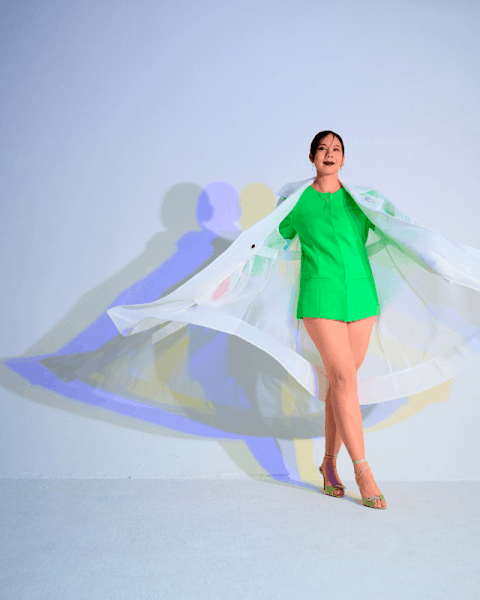
Cultivating connections
These days, Tan fills her time working on a ceiling and shelf installation for Niko Neko’s new store in Bukit Damansara, while juggling a few other projects. She also has a bucket list of designs she hopes to work on in the future, which involve animals, agriculture, and food. “Working with different fields and people excites me because it allows you to learn,” she says.
Whatever she pours herself into, she wants her art to resonate with people and benefit others positively. It’s no wonder why her proudest work yet is the Badminton Court Mural she did for PPR Sri Tioman 1. Although Tan was initially invited to engage with the community and design a wall mural, she decided to give a new lease of life to an abandoned badminton court she discovered during her visit to the site instead.
“It’s important for me to feel connected with the work and seeing people feel connected in their own way.”
“I came up with a design that’s playful and still maintains the badminton court outline. Then, I got the residents to paint it together and it turned out great!” she divulges. “Sure, it’s not going to look perfect, but seeing them wanting to make a change for their own space, you could see that they have more respect for it. I feel like it’s the little things like this that matter.”
If an artwork speaks a lot about the artist, then this project is a testament to Tan’s altruistic, sensitive spirit. And we can no doubt look forward to seeing more exhibits of this nature from her.
“At the end of the day, it’s important for me to feel connected with the work and seeing people feel connected in their own way. It doesn’t necessarily have to be aligned with how I want it to be – everyone is entitled to their own opinions and experience of the space and work,” she declares.
As for her advice to those looking to step into uncharted waters or explore similar artistic pursuits, Tan offers, “Be very authentic and accepting of who you are and just do the work. Don’t think too much – just do it and put it out there.”
Featured image: Tan wears a coat from MSGM.
Editor and interview: Natalie Khoo
Art director and styling: Anson Siau
Assisted by: Mon Kai Siong
Styling assistant: Phoebe Phua
Photographer: Edmund Lee | Hexa Studio
Assisted by: Zane Chan
Videographer: Haoyii Lim
Read more of FirstClasse Malaysia’s Inspire digital cover stories here.


